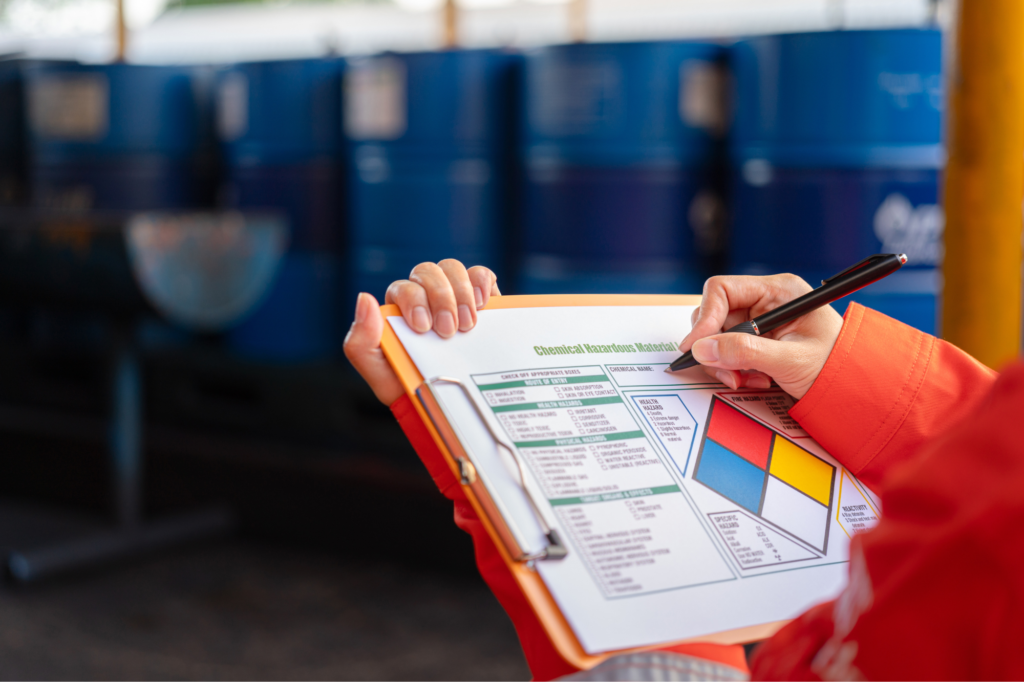
How to build a safety program in 8 steps
Implementing a safety program is integral for preventing injuries and illnesses in the workplace, increasing productivity, and engaging employees with safety. Whether you’re a small business or a large enterprise, here are 8 steps you can use to build an effective safety program.
Step 1: Make a commitment to safety
It is important to make safety a company-wide commitment. Include safety in your company mission statement and involve the executives in setting safety related goals. Document these goals so that you can track progress and identify areas for improvement. This step will help foster a culture of safety and keep safety top of mind for the entire organization.
Step 2: Understand the requirements in place for your industry
To learn the requirements for your industry, check out the resources made available by OSHA and speak with other professionals in your industry. Sometimes it pays to bring in an outside consultant for your industry even if it is just a safety manager from another similar company. You should document these requirements and advice so you can ensure they all are implemented.
Step 3: Identify hazards and risks
Anything with the potential to cause harm should be identified and addressed. Talk to your employees and assess your workplace to learn the best areas to implement changes.
Pay attention to:
- Workplace hazards like shop layout
- Environmental hazards such as dust
- Hazardous activities such as using machinery, and
- Your company’s current culture
Keep track of these hazards and risks so that they can be eliminated moving forward.
Step 4: Develop processes and programs
These processes and programs should be specifically tailored to meet the requirements from Step 2 and address the issues from Step 3. They should also hold both management and employees accountable for safety. It is best to have them written and made accessible to all employees.
The regulations that require a formal written program are as follows:
- Hazard communication program
- Lockout/tagout program
- Respiratory protection program
- Personal protective equipment (PPE)
- Bloodborne pathogens post-exposure plan
- Emergency action plan
- Permit-required confined spaces
- Electrical safety
- Fire prevention plan
- Hearing conservation program
- Trenching and excavation safety
Step 5: Educate your workforce
Educating your employees on policies and procedures any other relevant information is key to keeping them safe.
As a best practice, you should train:
- New hires
- Individuals who recently transferred or changed assignments
- Any time a new process, substance, or piece of equipment is added
- Any time new hazards are identified
- Any time refresher training is needed or required by regulations
Try to keep the training engaging and to track all training that takes place.
Step 6: Investigate and track all accidents and incidents
Tracking and investigating all accidents and incidents, regardless of the severity, will help you to prevent incidents in the future. Determine the cause of the incident, identify what could be changed, then take and track corrective and preventative measures. Sometimes this means making changes to your previously developed documents and training.
Step 7: Review your program
Every year you should review your training, procedures, and any written safety documents to look for any compliance gaps and/or identify potential areas for improvements in your program. Having a good auditing tool can be useful as you work through every aspect of your safety program.
Step 8: Implement an EHS management solution
An effective EHS management solution should have tools to help with building procedures, writing manuals, developing and implementing training, completing audits, tracking incidents, and more. Leveraging an EHS management solution will make your job easier and save your company massive amounts of time and money on its safety-related initiatives.



